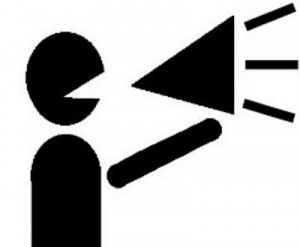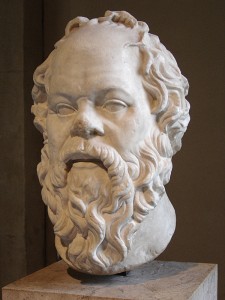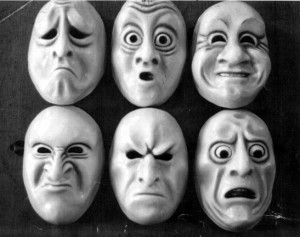 For almost seven years, I have toiled as the “one lone voice speaking out” on behalf of the Creative Brief, in the opinion of my esteemed colleague Sean Duffy, a man of wisdom and impeccable taste.
For almost seven years, I have toiled as the “one lone voice speaking out” on behalf of the Creative Brief, in the opinion of my esteemed colleague Sean Duffy, a man of wisdom and impeccable taste.
It has been a labor of love. The Creative Brief represents the best of the analytical side and the imaginative side of the advertising business, a combination that I revel in as a former direct-response creative.
I cherish any opportunity to dissect, explain, advocate for, instruct on, and simply talk about this under-appreciated, abused and too often poorly written document.
But it is more than a document. It is the best-kept secret for any one or any organization in search of a simple, direct method for establishing a value proposition.
I suggest that the Creative Brief escape its advertising-industry handcuffs and fulfill its promise as a purposeful roadmap for any business, any entrepreneur, anyone with a vision to market a product or service and who also struggles with arriving at the unique selling proposition. The one thing.
This struggle is common. It is universal: Everyone experiences it. There is a solution.
In trained hands the Creative Brief has the power to exquisitely distill anything—an ad campaign, a brand, a philanthropic foundation, your life’s ambition.
At its best, the Creative Brief promises gravitas by means of the Socratic Method. It is not, and should not be, limited to the advertising and creative businesses, where, quite frankly, it has languished as the poor step-child of the creative process in spite of its role as the creative kick-starter. 
So allow me to present a treatise on behalf of everyone who believes the best is possible even when the best is too often a mere hope.
This Creative Brief Manifesto is a set of prescriptions for businesses to adopt to clarify their message, to hone their value proposition. Critically, the brief is about content, not format. Adapt the five points below into provocative questions. The answers provide the imaginative shove that gets you—or your designated team—to your objective.
Remember, this is the starting point, not the ending. All great endings require an inspired beginning. Otherwise, as Euripides said, “A bad beginning makes a bad ending.” Which is a fancy way of saying, “Garbage in, garbage out.”
1. Start with feelings, not facts.
Social scientists, marketing researchers, creatives and many others all have ample evidence to demonstrate that you and I may rely on facts to help us make decisions, but if our hearts are not moved, if we do not have a strong feeling, we are not truly committed to the thing, whatever it might be.
This truth has nothing to do with what the client or the business owner wants the feeling to be. It’s all about discovering what the customer feels…and why. 
2. You’ll never grasp the emotion without first discovering an insight.
If you don’t know Socrates, you don’t know Jack. Think you need a ginormous research budget to unearth this so-called “insight”? You don’t. If you know how the Socratic Method works, you have the basic tools you need to discover an insight.
3. What’s in it for me?
The single-minded proposition (SMP) has fans and detractors, but one fact remains unchallenged: Customers remember what resonates with them. Keep it simple. Make it memorable.
The point is no longer to merely intrude and be pervasive. You must engage. It’s not about one-way communication in the age of social media. It’s about a conversation.
But whether you support or abhor the SMP, clarity (i.e. distillation, conciseness, laser focus) is the mandatory exercise.
4. Prove it!
You will never fall in love if there is no trust.
There is always a role for facts, and to seal the deal for the love affair, offer evidence that the emotional claim is believable. The best evidence has not changed: Testimonials, awards for reliability and quality, #1 best-seller.
Or, as Rod Tidwell says to Jerry McGuire, “Show me the money!”
5. Begin the story here.
Remember the Native American proverb: “Tell me a fact and I will learn. Tell me a truth and I will believe. Tell me a story and it will live forever in my heart.” The Creative Brief is the moral to the as-yet untold brand story.
It is a kind of “here’s where we want to end up” without knowing the path to that ending. The brief suggests a path, it points in the right direction, and trusts that those who execute from the brief will get there. Who knows how many left or right turns might be necessary, many or all of which appear to be leading you astray.
This is the great unknown, the mystery that arises from every brief: The writers put their trust in those who execute from the brief, and those team members trust the writers to have done their jobs in refining—distilling—the brief to its clarifying finest. Here is what you need to know, the brief tells them, and what is here will inspire you. Go, now, and perform alchemy.
How many practitioners believe it is possible? It’s just a piece of paper, they say. Don’t expect too much.
It’s time to stop thinking that way. What’s on that piece of paper is a product of human inspiration.
Invest in the outcome. 
Make sure you have skin in the game.
The Creative Brief is the best-kept secret for anyone or any business that wants a clearly marked path to an effective and believable value proposition.

